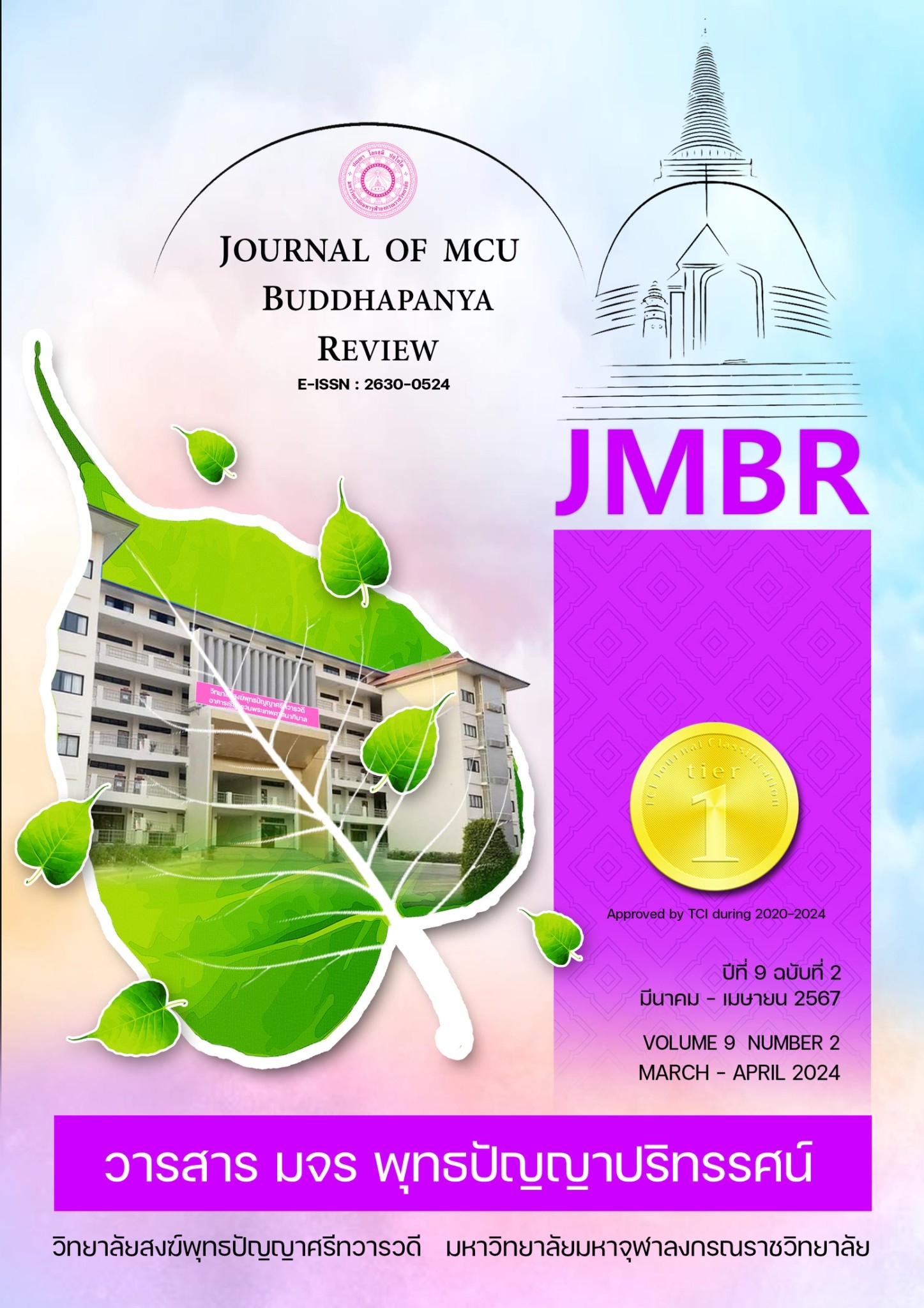การรับรู้และความต้องการของนักศึกษาต่อการเรียนการสอนเกี่ยวกับปัญญาประดิษฐ์ในงานอาชีวอนามัยและความปลอดภัย: กรณีศึกษามหาวิทยาลัยสุโขทัยธรรมาธิราช
คำสำคัญ:
การรับรู้, ความต้องการ, ปัญญาประดิษฐ์, อาชีวอนามัยและความปลอดภัยบทคัดย่อ
งานวิจัยนี้มีวัตถุประสงค์เพื่อ 1) ศึกษาการรับรู้ต่อปัญญาประดิษฐ์ของนักศึกษา 2) ประเมินความต้องการของนักศึกษาต่อการเรียนการสอนเกี่ยวกับปัญญาประดิษฐ์ในหลักสูตรอาชีวอนามัยและความปลอดภัย และ 3) ศึกษาความสัมพันธ์ระหว่างปัจจัยทั้งสองดังกล่าว เป็นการวิจัยเชิงพรรณนาแบบภาคตัดขวาง โดยได้ศึกษาทฤษฎีแรงจูงใจใฝ่สัมฤทธิ์ของแมคเคิลแลนด์เป็นกรอบการวิจัย กลุ่มตัวอย่างคือนักศึกษาหลักสูตรวิทยาศาสตรบัณฑิต (อาชีวอนามัยและความปลอดภัย) มหาวิทยาลัยสุโขทัยธรรมาธิราช จำนวน 199 คน คัดเลือกโดยใช้วิธีการสุ่มตัวอย่างแบบมีระบบ เครื่องมือวิจัยคือแบบสอบถามแบบมาตราส่วนประมาณค่า 5 ระดับของลิเคิร์ท วิเคราะห์ข้อมูลโดยใช้สถิติพรรณนา ได้แก่ การแจกแจงความถี่ ค่าร้อยละ ค่าเฉลี่ยเลขคณิต ค่าเบี่ยงเบนมาตรฐาน และวิเคราะห์ความสัมพันธ์โดยใช้สถิติสหสัมพันธ์สเปียร์แมน
ผลการวิจัยพบว่า 1) ผู้เข้าร่วมวิจัยมีการรับรู้ต่อปัญญาประดิษฐ์ในระดับน้อย โดยมีคะแนนเฉลี่ยเท่ากับ 1.94 แหล่งข้อมูลเกี่ยวกับปัญญาประดิษฐ์ส่วนใหญ่ร้อยละ 42.71 ได้รับข้อมูลจากสื่อออนไลน์ รองลงมาคือสื่อวิทยุ/โทรทัศน์ ร้อยละ 22.61 มีเพียงร้อยละ 17.09 ที่ได้รับจากการเรียนการสอนในสถาบันการศึกษา 2) ผู้เข้าร่วมวิจัยต้องการให้มีการจัดการเรียนการสอนเกี่ยวกับปัญญาประดิษฐ์ในระดับมาก โดยมีคะแนนเฉลี่ยเท่ากับ 3.45 และ 3) การรับรู้และความต้องการของนักศึกษาต่อการเรียนการสอนเกี่ยวกับปัญญาประดิษฐ์ในหลักสูตรอาชีวอนามัยและความปลอดภัย มีความสัมพันธ์กันในทิศทางตรงกันข้ามอย่างมีนัยสำคัญทางสถิติ (rs = - 0.82, p < .01)
ข้อค้นพบจากงานวิจัยนี้จะเป็นประโยชน์ต่อสถาบันการศึกษาและหน่วยงานที่เกี่ยวข้องในการพัฒนาความรู้และทักษะเกี่ยวกับปัญญาประดิษฐ์ เพื่อผลิตบัณฑิตสู่ภาคธุรกิจ/อุตสาหกรรมได้สอดคล้องกับความต้องการของนักศึกษาและยุทธศาสตร์ชาติ
เอกสารอ้างอิง
Aimjitkusone, P. (n.d.). Does AI technology have an impact on employment, and how must workers prepare to adapt?. Digital Economy Promotion Agency. Retrieved January 15, 2022, from https://www.depa.or.th/th/article-view/ai-employment
American Psychological Association. (2022). APA Dictionary of Psychology. Retrieved December 28, 2022, from https://dictionary.apa.org/perception
Carlisle, S., Ivanov, S., & Dijkmans, C. (2021). The digital skills divide: evidence from the European tourism industry. Journal of Tourism Futures. Vol. ahead-of-print No. ahead-of-print. https://doi.org/10.1108/JTF-07-2020-0114
Chaisuwan, B., Kuldilok, P., & Sakuna, C. (2022). Situations, Trends, and Needs of Knowledge and Artificial Intelligence Skills for Enhancing WorkEffectiveness among Working-Age People in Thailand. Journal ofHumanities and Social Sciences, Burapha University, 30 (1), 110-134.
Cronbach, L. J. (1990). Essentials of psychological testing. (5th ed.). New York: HarperCollins Publishers, 201-204.
EU-OSHA. (2021). Impact of artificial intelligence on occupational safety andhealth. Retrieved December 28, 2022, from https://osha.europa.eu/en/publications/impact-artificial-intelligence-occupational-safety-and-health
Fréour, L., Pohl, S., & Battistelli, A. (2021). How digital technologies modify the work characteristics: A preliminary study. The Spanish Journal of Psychology. 24 (e14). https://doi.org/10.1017/SJP.2021.12
Krejcie, R. V. & Morgan, D. W. (1970). Determining Sample Size for ResearchActivities. Educational and Psychological Measurement. 30 (3), 607-610.
McClelland, D. C. (1961). The Achieving Society. New York: D. Van Nostrand.Ministry of Digital Economy and Society. (n.d.). Digital Thailand - AI EthicsGuideline. Retrieved December 29, 2022, from https://www.etda.or.th/getattachment/9d370f25-f37a-4b7c-b661-48d2d730651d/Digital-Thailand-AI-Ethics-Principle-and-Guideline.pdf.aspx?lang=th-TH
Ministry of Higher Education, Science, Research and Innovation & Ministry of Digital Economy and Society. (2022). National Artificial Intelligence Action Plan for Thailand Development (2022 – 2027). Retrieved January 5, 2022, from https://pub.nstda.or.th/gov-dx/wp-content/uploads/2022/12/20220726-AI.pdf.
Paungmalit, P., Traiphong, P., & Leelakitpaisarn. Y. (2018). Attitudes andAwareness of People on the Laws and Regulations on Sky Lantern. Journal of Graduate Studies Valaya Alongkron Rajabhat University. 12 (2), 142.
Rujichok, K. (2022). Knowledge Management System Development Plan toSend Rice PlanningPolicyfrom Thai Government to Farmers for Increasing Quality Products and Farmers Development Sustainability. Journal of MCU Buddhapanya Review. 7(3), 231-242.
Srisakbangtoei, S. (2019). The Development of Information Technology in Phrathandongrangvitthayakharn School. Journal of MCU Buddhapanya Review. 4 (3), 455-468.
Tepkayon, P. (2021). Perceptions, Understanding, and Behavior of NIDA Staff toward the Policy on Operational Excellence. Bangkok: Office of the President, National Institute of Development Administration.Retrieved December 29, 2022, fromhttps://www.km.nida.ac.th/th/images/PDF/research/paradeere164.pdf.
Yajing Xue, Y, & Wang, Y. (2022). Artificial Intelligence for Education and Teaching. Wireless Communications and Mobile Computing. https://doi.org/10.1155/2022/4750018
ดาวน์โหลด
เผยแพร่แล้ว
รูปแบบการอ้างอิง
ฉบับ
ประเภทบทความ
สัญญาอนุญาต
ลิขสิทธิ์ (c) 2024 วารสาร มจร พุทธปัญญาปริทรรศน์

อนุญาตภายใต้เงื่อนไข Creative Commons Attribution-NonCommercial-NoDerivatives 4.0 International License.



